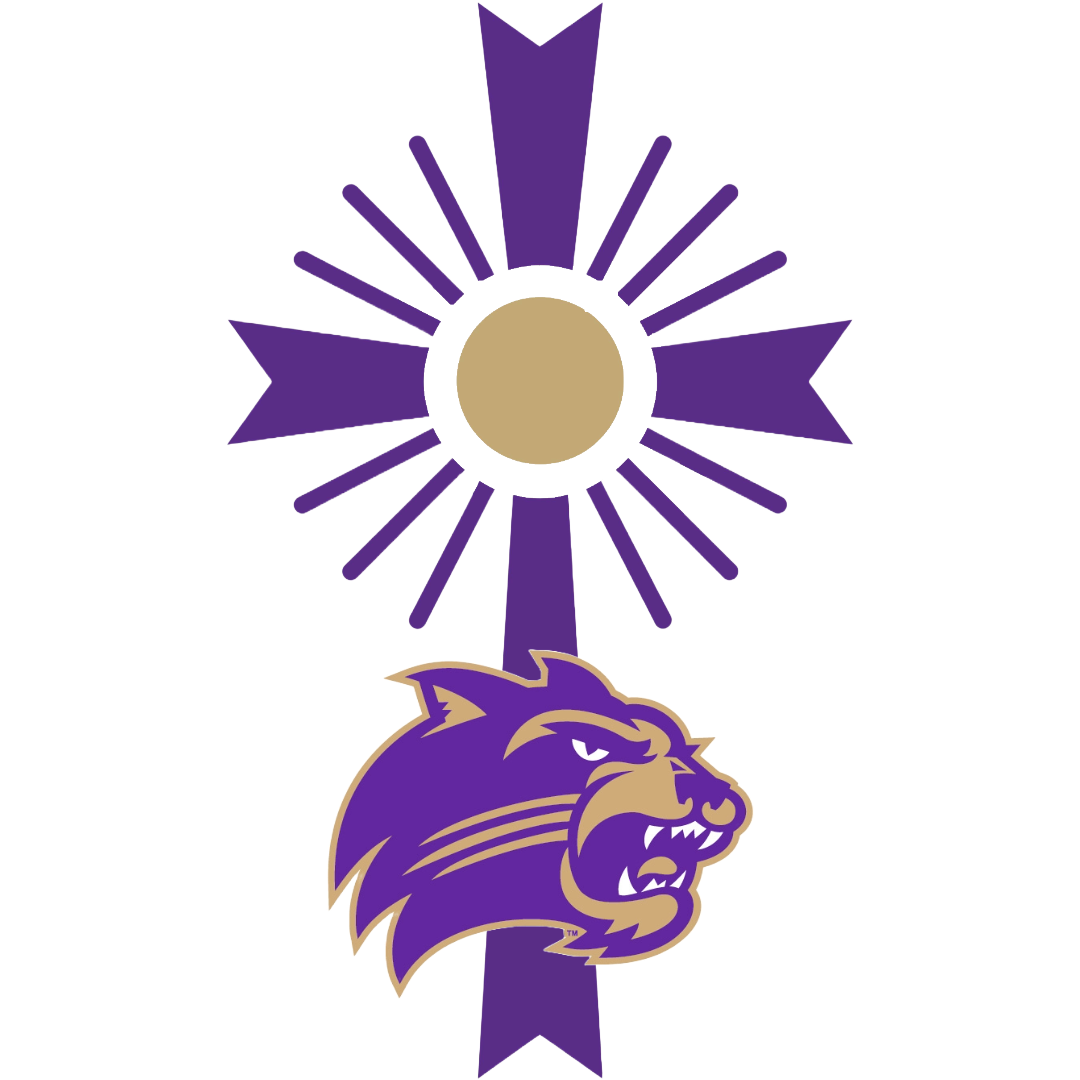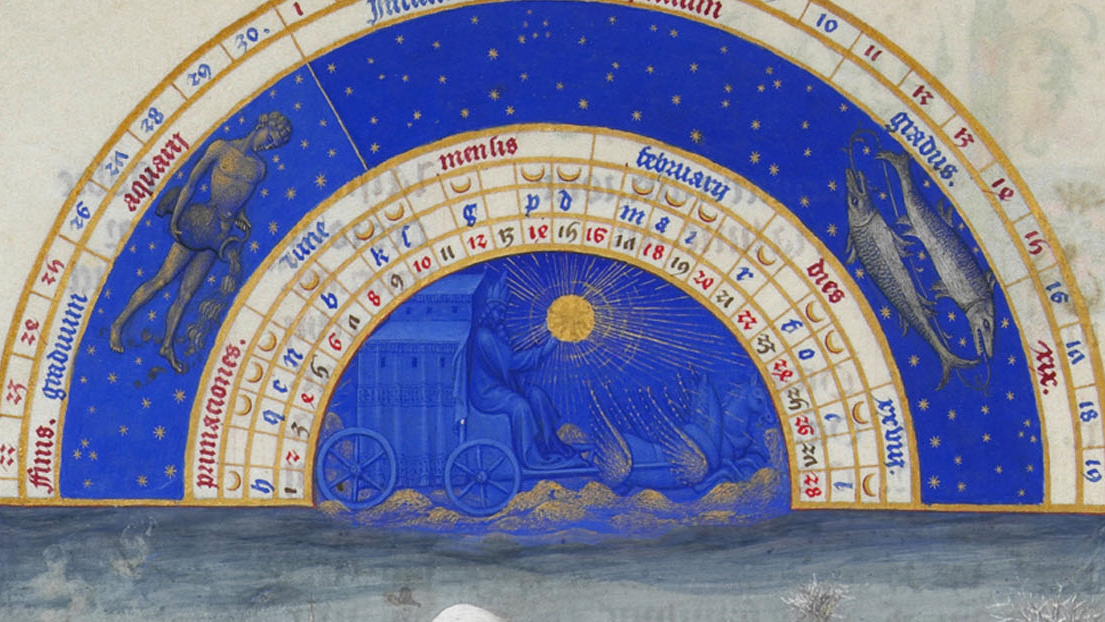Advent & the Liturgical Year
Next Sunday begins the season of Advent and the start of a new Liturgical Year. As we enter into this season of anticipation and preparation, I thought it would be good to look at how Advent fits into the overall cycle of the Church’s liturgical year. And to do that, I want to begin with the prayer we offer at the conclusion of each rosary.
O God, whose Only-Begotten Son, by His life, death, and resurrection, has purchased for us the rewards of eternal life; grant, we beseech Thee, that by meditating on these mysteries of the most holy Rosary of the Blessed Virgin Mary, we may imitate what they contain, and obtain what they promise, through the same Christ our Lord.
That by meditating on these mysteries — that is to say, the mysteries of the life, death, and resurrection of Jesus Christ — we may imitate them in our own lives and obtain their promise for ourselves. This is, in a nutshell, the whole purpose of the Christian life; to unite ourselves with Christ in such a way that his Paschal mysteries are lived out in us.
I begin with this thought because the whole liturgical calendar of the Church is designed to guide us in meditating on the life of Christ and thus achieve the end for which we pray, our salvation. The liturgy of the Church is above all about worship of God, but it is also about sanctifying time by ordering our days and weeks — even our hours and minutes — toward God. It is a practice that goes all the way back to the beginning of God’s revelation, with the six days of creation followed by a day of sabbath rest when we are commanded to pause from our worldly labors and work instead (liturgy means “the work of the people”) for the divine Creator who is the Alpha and Omega, our origin and our end.
Thus our year is structured around weekly cycles of seven days. Each Sunday is a celebration of the Resurrection, a little “Easter,” while each Friday is a day of penance, a little “Good Friday.” And if we pray our rosary daily, as Catholics are encouraged to do, then throughout the week we are meditating on the entire life of Christ, from the announcement of his conception to his mother, Mary, to his placing a crown upon the head of that same mother as he welcomes her into the fullness of his kingdom (as he one day will welcome us if we persevere in faith). If we pray the Liturgy of the Hours with the Church, then each day is marked by a cycle of prayer from sunrise to sunset., the psalms and scripture canticles becoming like the air we breath.
The Church’s annual calendar does the same thing on a larger scale. The year revolves around two principal high feasts; the Lord’s Nativity at Christmas, and most especially his death & resurrection (the Paschal Mystery) at Easter. These celebrations each have their own anticipatory season of preparation, Advent and Lent. The time in between is referred to as Ordinary Time, and the whole calendar is filled with the feasts of the saints, to keep these models of Christian virtue always before us, so we may pray for their intercession as we seek to imitate their example.
Advent
The liturgical year begins with the season of Advent. This is a four week period of anticipation preceding the celebration of Christmas. Historically it was a penitential season, like Lent, but is no longer considered such. Nevertheless, it retains much of its former penitential character. The liturgical color is purple or violet, and the Gloria is omitted from Mass. It is common for many parishes to host Penance services and people are encouraged to go to Confession as a way of preparing their hearts for the coming of Christ.
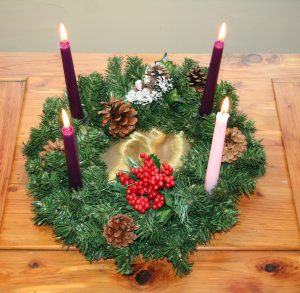
The word advent means “coming,” and the Advent season begins by anticipating the second coming of Christ in glory as the great judge at the end of time. It is fitting that we should begin a new liturgical year with a reminder of where time is ultimately pointing, reflecting on how we should live our lives in light of this end. An important Advent figure is John the Baptist who calls on us to repent, for the kingdom of God is near.
Midway through the season, our focus shifts from looking forward to looking back, to that first coming of Christ at his Nativity in Bethlehem. The third Sunday of Advent is called Gaudete Sunday, from the first word in Latin of the entrance chant of that Mass: “Rejoice in the Lord always; again I say rejoice. Indeed, the Lord is near” (Phil 4:4-5). The liturgical color for this Sunday is rose, a lightening of the penitential purple.
A common tradition in churches and homes is the keeping of an Advent wreath, lighting a new candle on each consecutive Sunday to mark the time until Christmas, like the wise virgins who keep their lamps lit in anticipation for the coming of the bridegroom.
Christmas
The Christmas season begins on December 25, or rather, the evening of December 24. Major feasts, called “solemnities,” are celebrated with vigils, after the ancient Jewish manner of reckoning the beginning of a new day with sunset of the day before. (Every Sunday is a solemnity, which is why parishes may celebrate vigil Masses for the Sunday on Saturday evening).
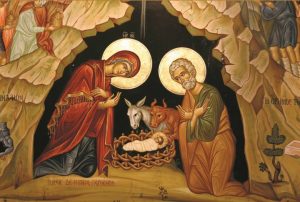
Christmas takes its name from “Christ’s Mass.” It is the Mass that celebrates his birth into the world. In addition to the Vigil Mass on Christmas Eve, and Christmas Mass during the Day, there is also a Mass at Night, traditionally celebrated at midnight, marking the fact that Christ was born during the night. The Christmas season celebrates in a special way the incarnation of the Son of God as man and his manifestation (epiphany) to the world.
This is a celebratory season. The liturgical color is white (or gold or silver). Parishes are usually decorated in a festive way. The Gloria returns to the Mass. The Christmas season includes the celebrations of the Holy Family (the Sunday after Christmas), Mary, Mother of God (January 1), and Epiphany (traditionally January 6, but often now observed on the Sunday between Jan 2 and 8). The “Twelve Days of Christmas” refers to the time between Christmas and the Epiphany.
Formerly, in some parts of the Church, the Christmas season concluded with the celebration of the Presentation of the Lord in the Temple on Feb. 2, popularly called “Candlemas” because of the blessing of candles celebrated on this day. Today the Christmas season concludes with the Feast of the Baptism of the Lord, which is observed on the Sunday after Epiphany.
After the Christmas season ends, there is a brief period of Ordinary Time (see below) before we enter into the penitential season of Lent.
Lent
Like Advent, Lent is a time of preparation. It encompasses the six weeks before Easter and begins with Ash Wednesday, when blessed ashes are imposed upon the heads of the faithful as a reminder of our mortality and a call to repentance.
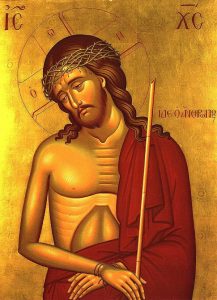
The liturgical color is purple or violet. It is a penitential season marked by prayer, fasting and almsgiving. The Gloria and the Alleluia are not sung during this season. Instrumental music is forbidden at Mass. Flowers are not permitted around the altar.
The approximately forty days of Lent correspond to the forty days Jesus spent fasting in the desert before beginning his public ministry. Ash Wednesday and Good Friday are days of fasting and abstinence from flesh meat; every Friday during Lent is a day of abstinence. It is common for Catholics to make other voluntary sacrifices during the Lenten season or take on additional penitential practices.
The Stations of the Cross is a popular devotion to pray during Lent, as a way of meditating on the passion of Christ. Parishes typically offer Penance services and additional times of Confession and opportunities for Eucharistic Adoration.
The fourth Sunday of Lent is called Laetare Sunday, from the first word in Latin of the entrance chant for the Mass, “Rejoice, Jerusalem, and all who love her. Be joyful, all who were in mourning; exult and be satisfied at her consoling breast” (Is 66:10-11). The liturgical color for this Sunday is rose, a lightening of the penitential purple. Modest flower arrangements may be used and the music may have a more joyful character. It is a bit of a respite before we enter into what is called Passiontide.
The last Sunday of Lent is Palm Sunday of the Lord’s Passion, celebrating Jesus’ triumphal entry into Jerusalem, accompanied by shouts of Hosanna! and waving of palm branches, followed by his subsequent arrest, torture and crucifixion. The liturgical color is red.
Holy Week & the Easter Triduum
The week between Palm Sunday and Easter is known as “Holy Week” and is the most sacred time of the year. It includes the high point of the liturgical year, known as the Easter Triduum (Latin for “three days”). The Triduum consists of Holy Thursday, Good Friday, and the Easter Vigil on Saturday night.
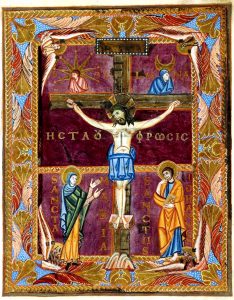
Holy Thursday commemorates the Last Supper and the institution of the Eucharist. The liturgical color is white (or gold or silver). The Mass concludes with the transposition of the Eucharist from the church to an altar of repose, reflecting Jesus’ agony in the garden on the night before his passion. The faithful are invited to imitate the Apostles in keeping our Lord company.
Good Friday commemorates the Lord’s passion and death on the cross. The liturgical color is red. This is the one day out of the entire year when no Mass is celebrated. Instead, the Church gathers for a commemoration of the Passion; a liturgy of the Word, veneration of the Cross, solemn intercessions, and the distribution of Holy Communion reserved from the Holy Thursday Mass.
The Sacred Paschal Triduum concludes with the celebration of the Easter Vigil Mass on Saturday night. This is the highest feast of the year. The liturgical color is white or gold. The liturgy begins outside with a fire and blessing of a Paschal candle, from which light is spread to all the faithful. New Christians are baptized at this Mass that commemorates in a solemn and celebratory way the resurrection of the Lord and his triumph over sin and death.
Easter
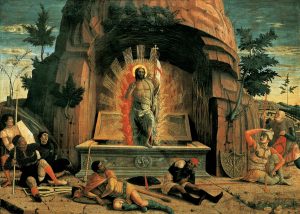
Unlike Christmas, which is celebrated on the same date each year, the date of Easter changes. It is celebrated on the first Sunday after the full moon that occurs on or after the spring equinox. This dating aligns our Easter celebration with the Jewish feast of Passover while retaining its Sunday observance. Easter is our new Passover, which is the name it is known by in most languages (Pasqua in Italian, Pascuas in Spanish, or Paske in Dutch). The English word Easter comes from the German Ostern, which means “spring.” This is a time of celebrating new life and our freedom from sin and death as we proclaim, “Christ is Risen, Alleluia!” and “This is the day the Lord has made, let us rejoice and be glad” (Ps 118:24).
We celebrate the Resurrection of Christ for the entire Easter season, which continues for 50 days of joyful celebration. It includes the feasts of Divine Mercy Sunday (the Sunday after Easter) and the Ascension of the Lord (40 days after Easter). The season concludes with the Feast of Pentecost, commemorating the descent of the Holy Spirit upon the Apostles and the birthday of the Church. The time between the Ascension and Pentecost that the Apostles spent in prayer is the origin of the novena custom of praying for a special intention for nine consecutive days.
After Pentecost we resume Ordinary Time until the end of the Liturgical Year and the start of a new Advent season.
Ordinary Time
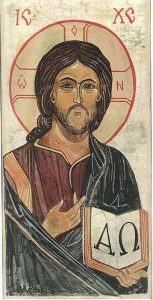
The bulk of the year is known as Ordinary Time — not “ordinary” in the common sense of the word, but ordinal, in reference to the fact that the Sundays (and corresponding weeks) of this season are numbered. During this season, the scripture readings review the life and teaching of Jesus, his miracles, parables, and proclamation of the kingdom. The liturgical color is green, representing life and growth.
The final Sunday of Ordinary Time is celebrated as the Solemnity of Christ the King of the Universe, a reminder as one year ends and another begins, that Jesus Christ is the Lord and Master of everything that is, including time itself.
By celebrating the feasts and seasons of the Church year, observing her fasts, prayerfully participating in her liturgies and reading the scriptures assigned to each Sunday (if not every day), our lives become ordered around the model of Christ. As we celebrate these mysteries, let us pray that we may truly imitate what they contain so that we may obtain what they promise.
Learn more…
The Liturgical Year and Calendar from the US Conference of Catholic Bishops
More on Liturgical Colors
For those who are curious, here is when the different liturgical colors are used in the Roman Rite of the Catholic Church throughout the year (other Rites will have their own traditions).
- GREEN: Ordinary Time
- WHITE/GOLD: Christmas, Easter, feast days of non-martyrs, and celebrations such as baptisms, weddings, funerals, ordinations, and solemn blessings
- VIOLET/PURPLE: Lent, Advent, funerals and penance services
- RED: Palm Sunday, Good Friday, Pentecost, feast days of martyrs, and the celebration of confirmation
- ROSE: optional color on the 3rd Sunday of Advent (Gaudete) and the 4th Sunday of Lent (Laetare)
- BLACK: optional color for funerals and All Souls Day
